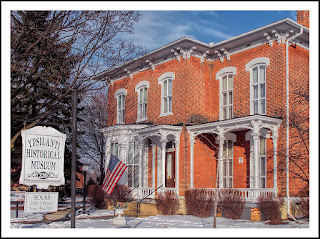 |
| "The Detroit Fire: June 11, 1805" painting by Robert Thom (1965). |
Detroit's history is forged in fire. From the furnaces of its steel industry to a history of blazing civil unrest, Detroit is as familiar with fire as Atlanta, Chicago and San Francisco. From the senseless arson of Devil's Night to the vigilante urban renewal of more recent years, fire has been an agent for change and part of the city's destiny.
 |
| Major General Arthur St. Clair |
At about 9:00 am on June 11, 1805, the only fire-fighting equipment the city had were wooden buckets. Although no official cause for what history notes as the Great Fire was ever determined, it was widely believed that baker John Harvey carelessly tapped out some hot tobacco ash from his pipe catching some straw on fire. The fire quickly consumed his barn and spread embers throughout the city. It soon became evident that the fire brigade efforts were useless. The fire spread too quickly. Residents saved what they could and fled from the stockade. By afternoon, every home and building was razed except for the stone fort along the waterfront and some brick chimneys.
 |
| Father Gabriel Richard |
 |
| Judge Augustus Woodward |
In the days of horse-drawn carriages and wagons, the street arrangement may have seemed elegant and sophisticated. After all, the street plan was based on the urban layouts of Washington D.C. and Paris, France. But in our modern fast-paced society of high speed automobiles, the eighteenth-century arrangement of diagonal streets is difficult to navigate by car and not particularly pedestrian friendly.
The second way Detroiters are reminded of the Great Fire is emblazoned on the city's official flag reflecting its early history. The flag's field is divided into quarters. One panel represents the city's French heritage with five golden fleurs-de-lis on a white background. One panel represents British rule with three golden lions on a red background. The other two panels represent the United States. One has thirteen stars on a blue background and the other has thirteen red and white stripes. The city's emblem and motto are centered on the flag. A woman weeps while another comforts her with the words of Father Richard, "We hope for better times. It will rise from the ashes." In our time, these words are prophetic.
Link to post about St. Anne's Catholic church: https://fornology.blogspot.com/2014/12/detroits-saint-anne-roman-catholic.html










